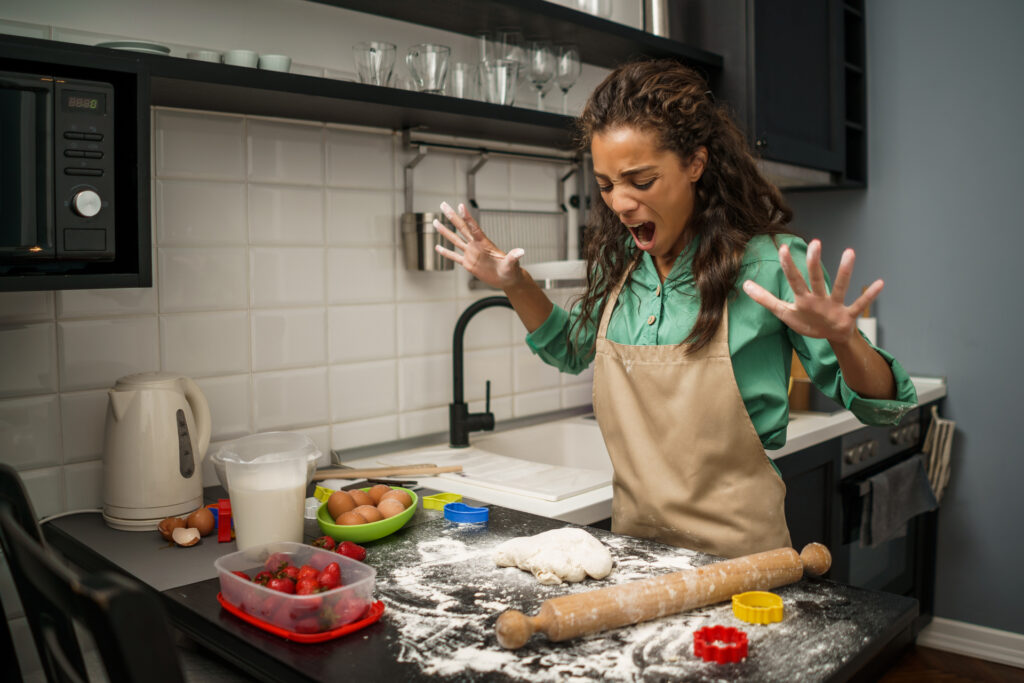
Cooking can be a delightful experience, but even the best chefs occasionally encounter hiccups. Whether your sauce is too salty, your cake didn’t rise, or your pasta is sticking together, every mistake is an opportunity to learn. Chef Abdul, known for his expertise in culinary troubleshooting, believes that “Every cooking mishap can be turned around with a little creativity and knowledge.”
Let’s explore some of the most common cooking mistakes and how to fix them like a pro.
Adding too much salt is one of the most common kitchen errors, but don’t worry—it’s fixable!
Solutions:
Chef Abdul’s Tip: “When seasoning, always start with less salt and taste as you go. You can always add more, but you can’t remove it.”
Rice that’s overcooked or undercooked can ruin a meal, but it’s easy to fix.
For Mushy Rice:
For Undercooked Rice:
Chef Abdul’s Tip: “Measure your water and rice carefully. For most varieties, a 2:1 water-to-rice ratio works perfectly.”
A flat cake can be disappointing, but the good news is that you can still salvage it.
Causes and Fixes:
Chef Abdul’s Tip: “Always preheat your oven and use the right pan size to ensure even baking.”
A watery sauce can detract from a dish’s flavour and presentation.
Thickening Techniques:
Chef Abdul’s Tip: “Always thicken gradually. Adding thickener’s easier than fixing a sauce that’s become too gloopy.”
Sticky pasta can ruin a perfectly planned meal, but it’s easy to prevent and fix.
Prevention Tips:
Fixing Sticky Pasta:
Chef Abdul’s Tip: “Always reserve some pasta water—it’s great for loosening sauces and adding a silky texture.”
Soggy vegetables can lose flavour and texture, but you can still save them.
Solutions:
Chef Abdul’s Tip: “Cook vegetables just until tender and keep an eye on them. A minute or two can make all the difference.”
Greasy soup can be unappetising, but it’s an easy fix.
Solutions:
Chef Abdul’s Tip: “Let the soup chill in the fridge. The fat will rise to the top and harden, making it easy to skim off.”
Dense bread can result from issues with kneading, proofing, or the yeast itself.
Fixes and Tips:
Chef Abdul’s Tip: “Bread-making is all about patience. Don’t rush the proofing process—it’s essential for light, airy loaves.”
A stir-fry should be crisp and vibrant, not limp and watery.
Solutions:
Chef Abdul’s Tip: “Prep all your ingredients beforehand. Stir-frying is fast, so you need everything ready to go.”
Burning food happens to the best of us, but you don’t have to throw everything out.
Solutions:
Chef Abdul’s Tip: “Watch your cooking, especially with delicate ingredients. Using medium heat can prevent scorching.”
“Cooking mistakes are part of the learning process,” Chef Abdul explains. “How you adapt and use those moments to improve your skills matters.”
By understanding the causes of common cooking errors and applying these fixes, you’ll rescue your dishes and become a more confident and versatile cook. So, the next time something goes wrong in the kitchen, take it as an opportunity to experiment, learn, and grow. Happy cooking!
Chef Abdul © Copyright 2024. All rights reserved.